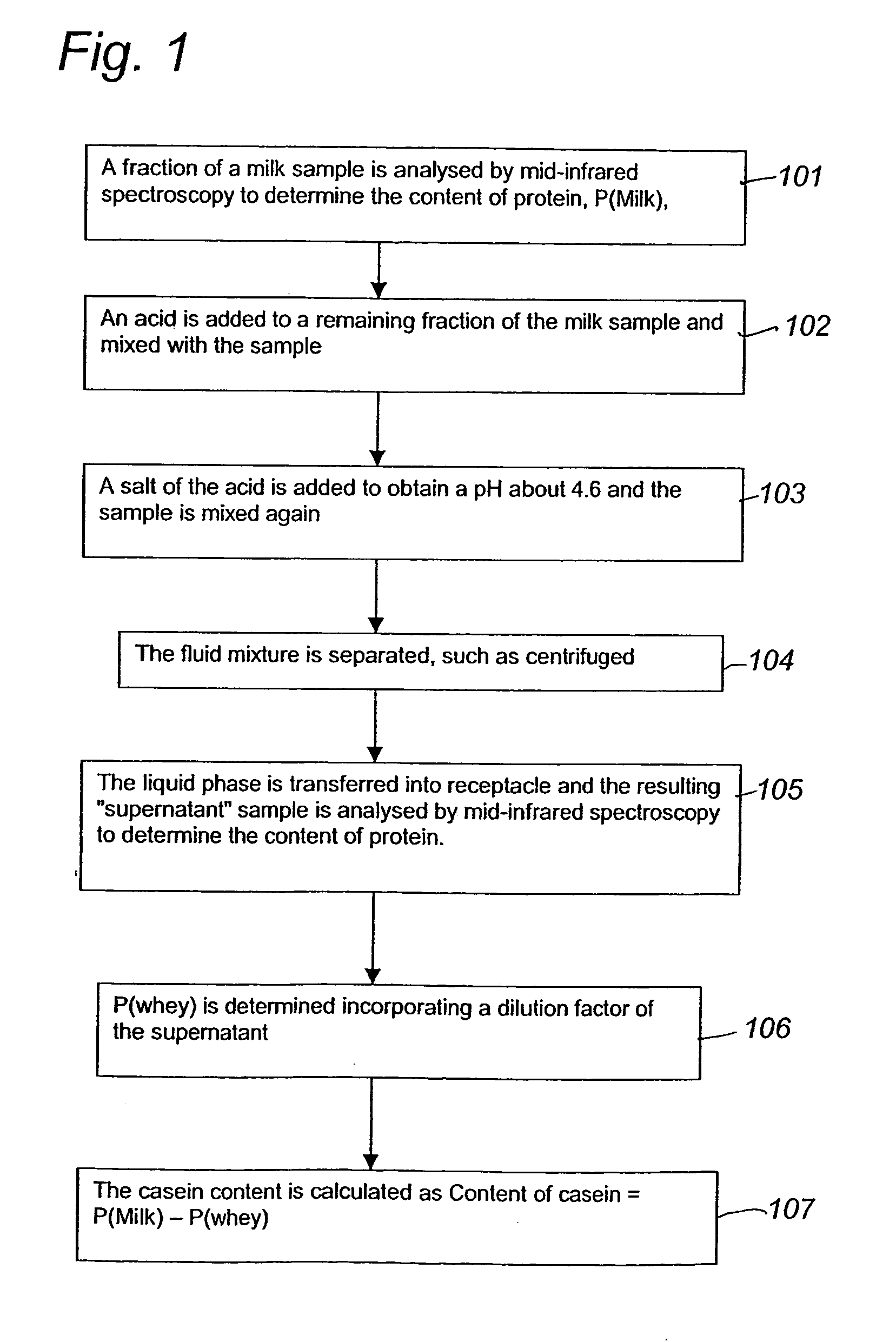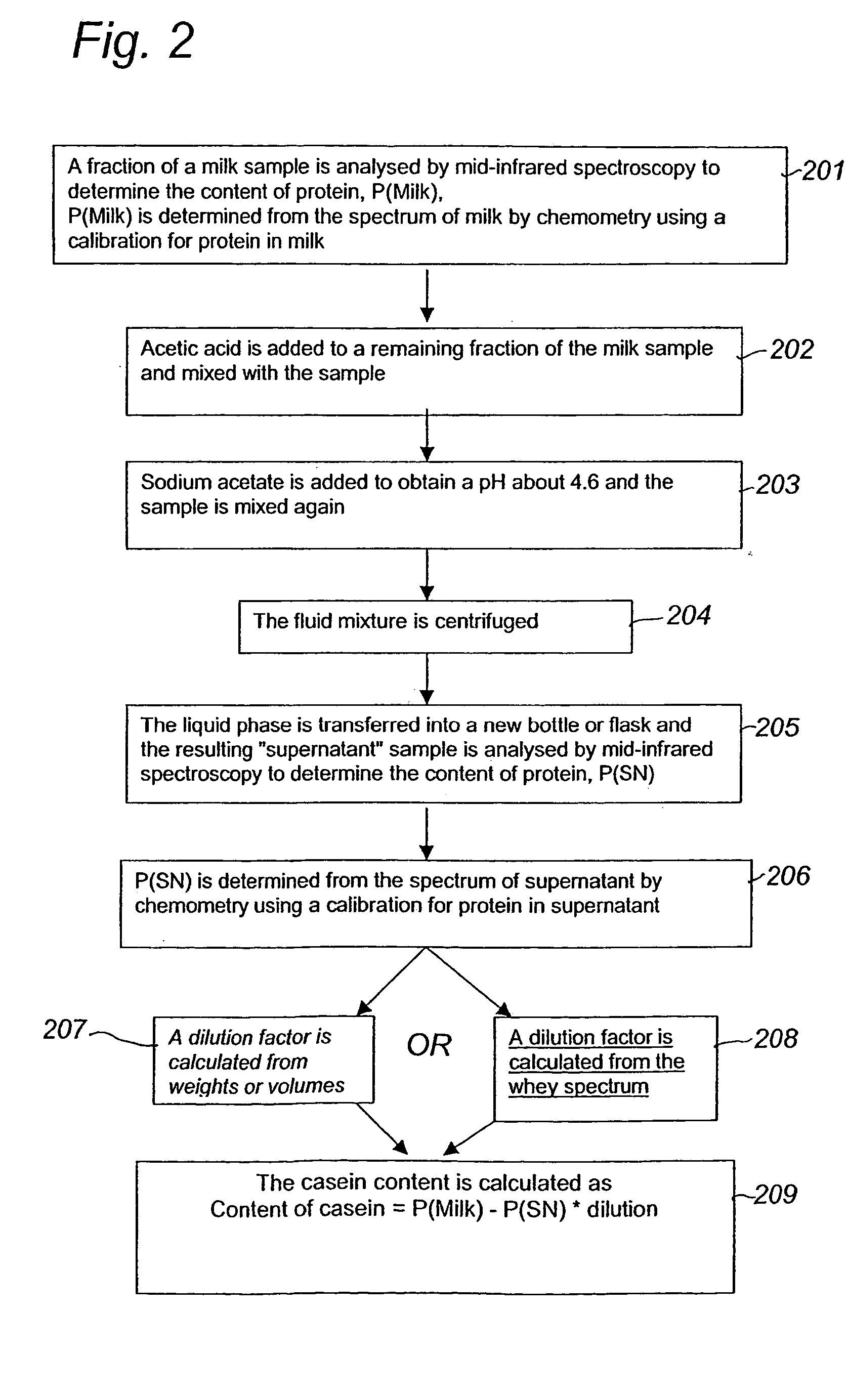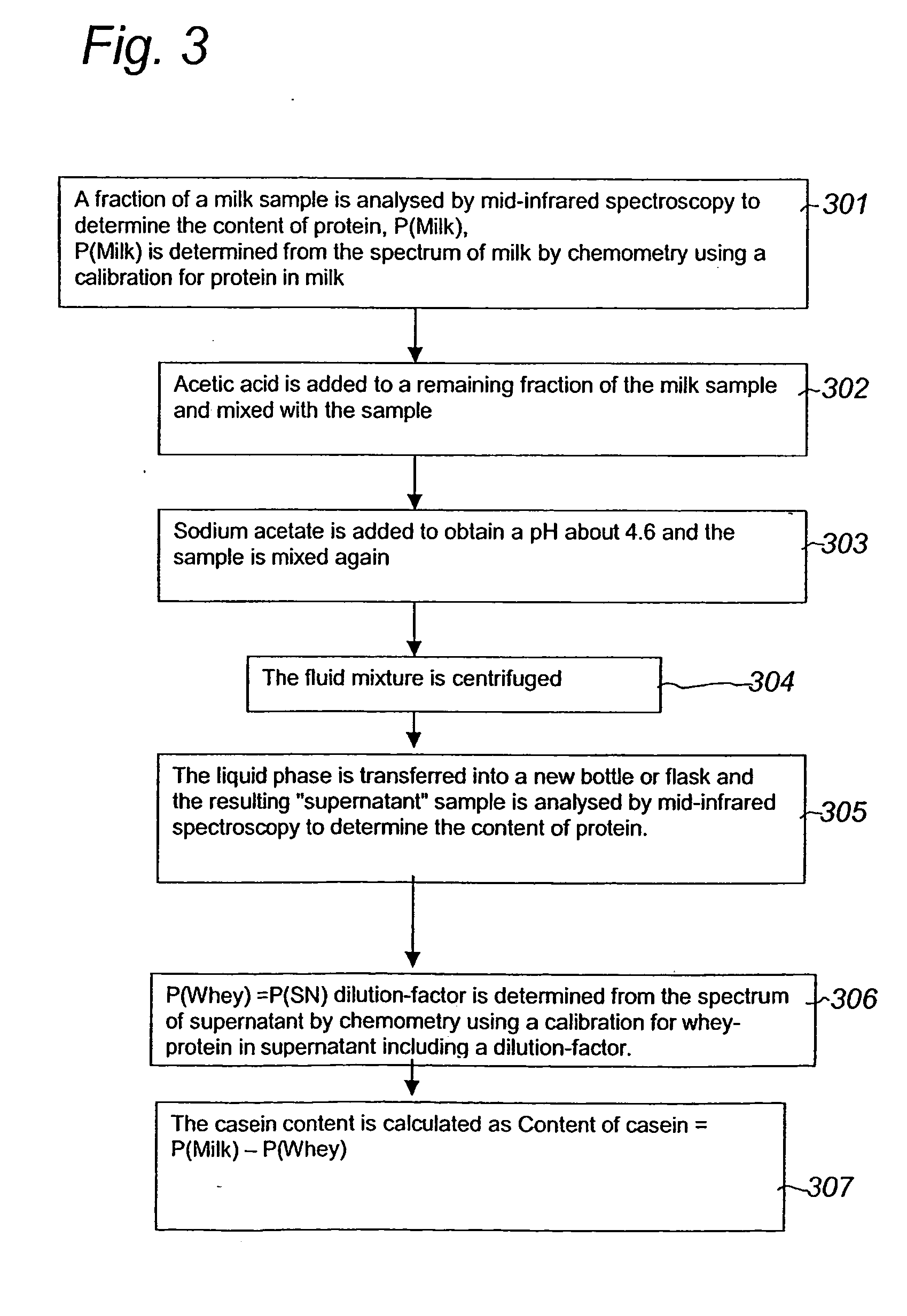Methods for casein determination in milk
a casein and milk technology, applied in the field of milk casein determination methods, can solve the problems of time-consuming and other problems, and achieve the effect of improving the accuracy of measuremen
- Summary
- Abstract
- Description
- Claims
- Application Information
AI Technical Summary
Benefits of technology
Problems solved by technology
Method used
Image
Examples
Embodiment Construction
[0060]FIG. 1 illustrates the broadest aspect of the invention. A fraction of a milk sample is analysed by mid-infrared spectrometry in step 101. The content of protein, P(milk ), is determined from the spectral data by use of well-known chemometric methods for quantitative determinations. An acid of known concentration / strength able to precipitate casein is added to a remaining fraction of the milk sample, and mixed with the sample in step 102. A salt of the acid of known concentration is added to obtain a stable pH, such as about 4.6, and the sample is mixed again to complete the precipitation of casein in step 103. The fluid mixture is separated into a liquid phase called the supernatant and a precipitate of casein, preferably by centrifugation and / or by filtration in step 104. The supernatant is then transferred to a container, such as a receptacle and a sample of the supernatant (or filtrate) is analysed by mid-infrared spectrometry in step 105. A dilution factor accounting for ...
PUM
| Property | Measurement | Unit |
|---|---|---|
| concentration | aaaaa | aaaaa |
| infrared absorbance | aaaaa | aaaaa |
| pH | aaaaa | aaaaa |
Abstract
Description
Claims
Application Information
 Login to View More
Login to View More - R&D
- Intellectual Property
- Life Sciences
- Materials
- Tech Scout
- Unparalleled Data Quality
- Higher Quality Content
- 60% Fewer Hallucinations
Browse by: Latest US Patents, China's latest patents, Technical Efficacy Thesaurus, Application Domain, Technology Topic, Popular Technical Reports.
© 2025 PatSnap. All rights reserved.Legal|Privacy policy|Modern Slavery Act Transparency Statement|Sitemap|About US| Contact US: help@patsnap.com



